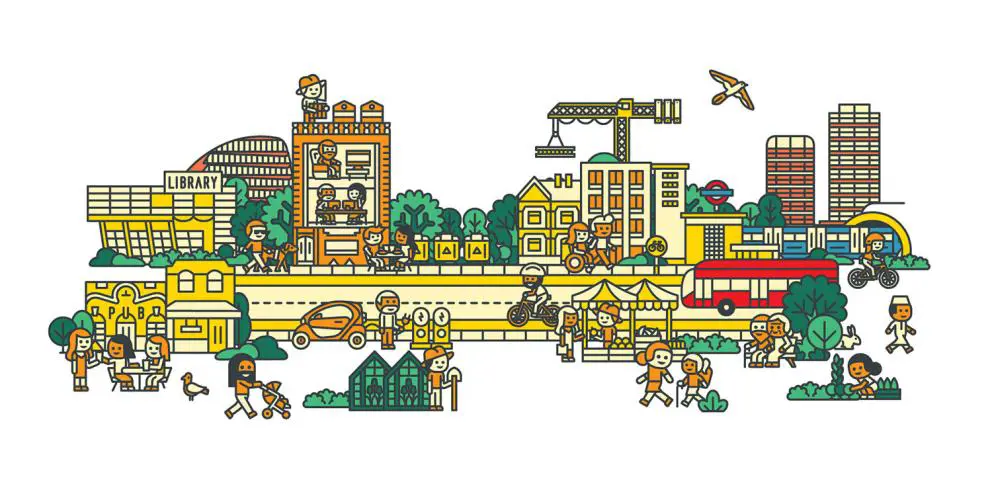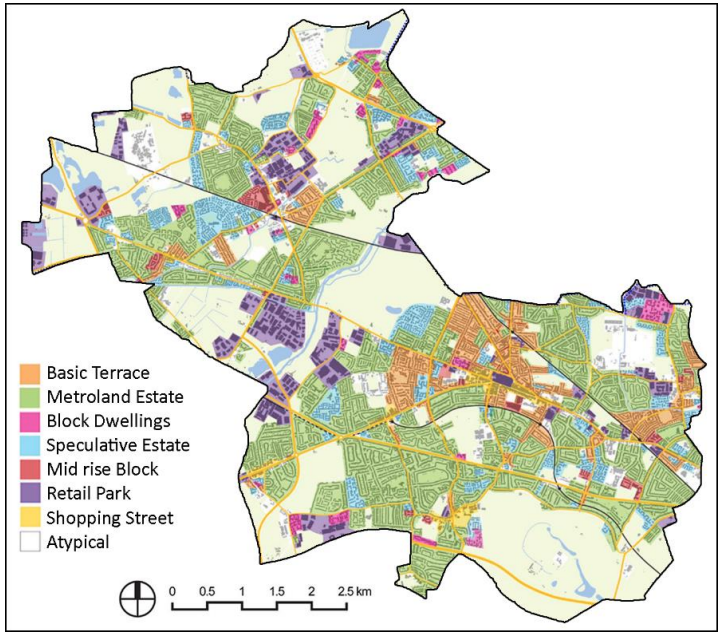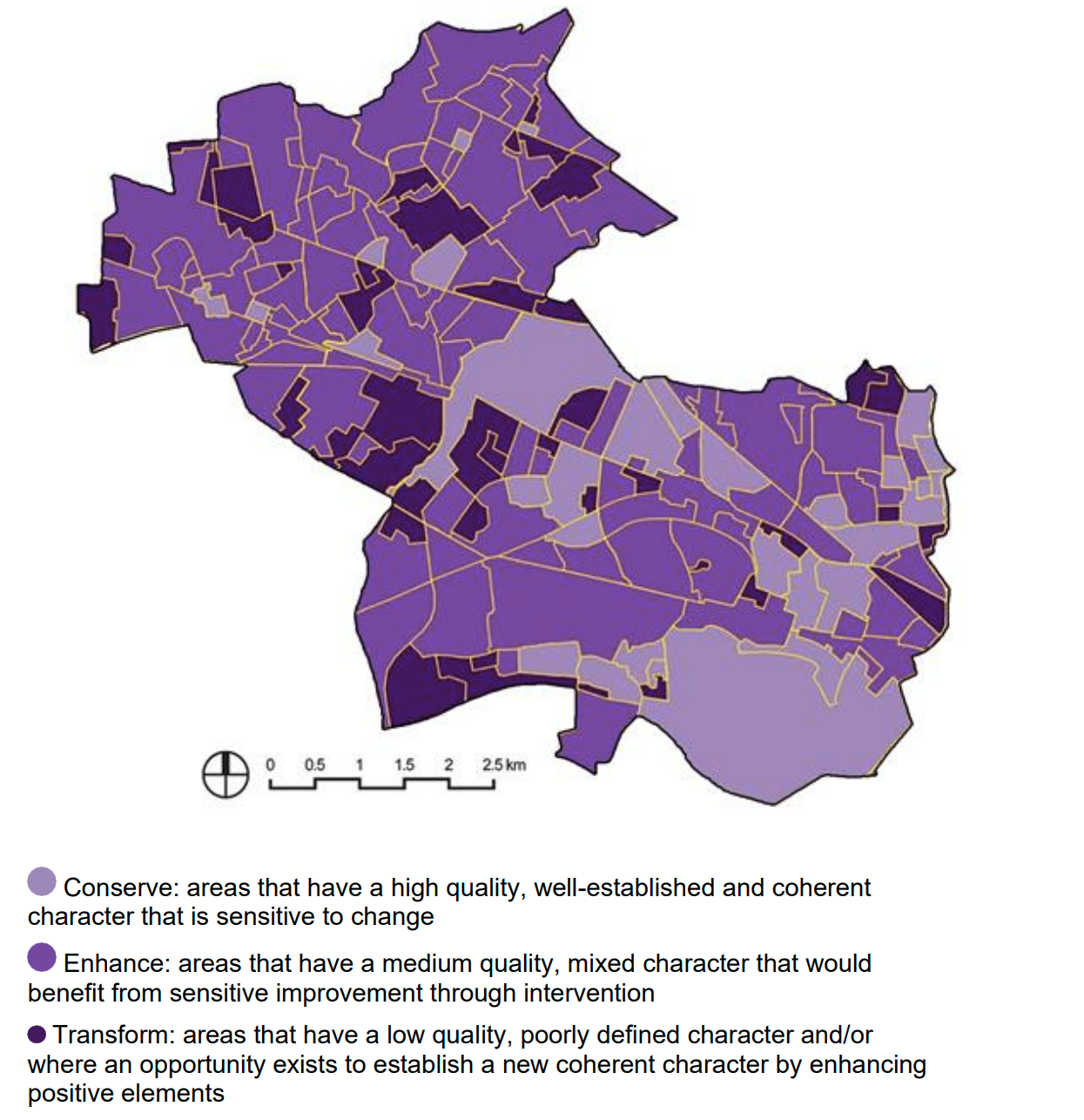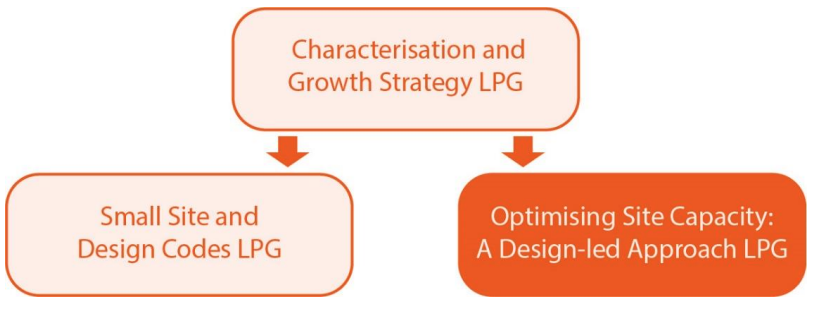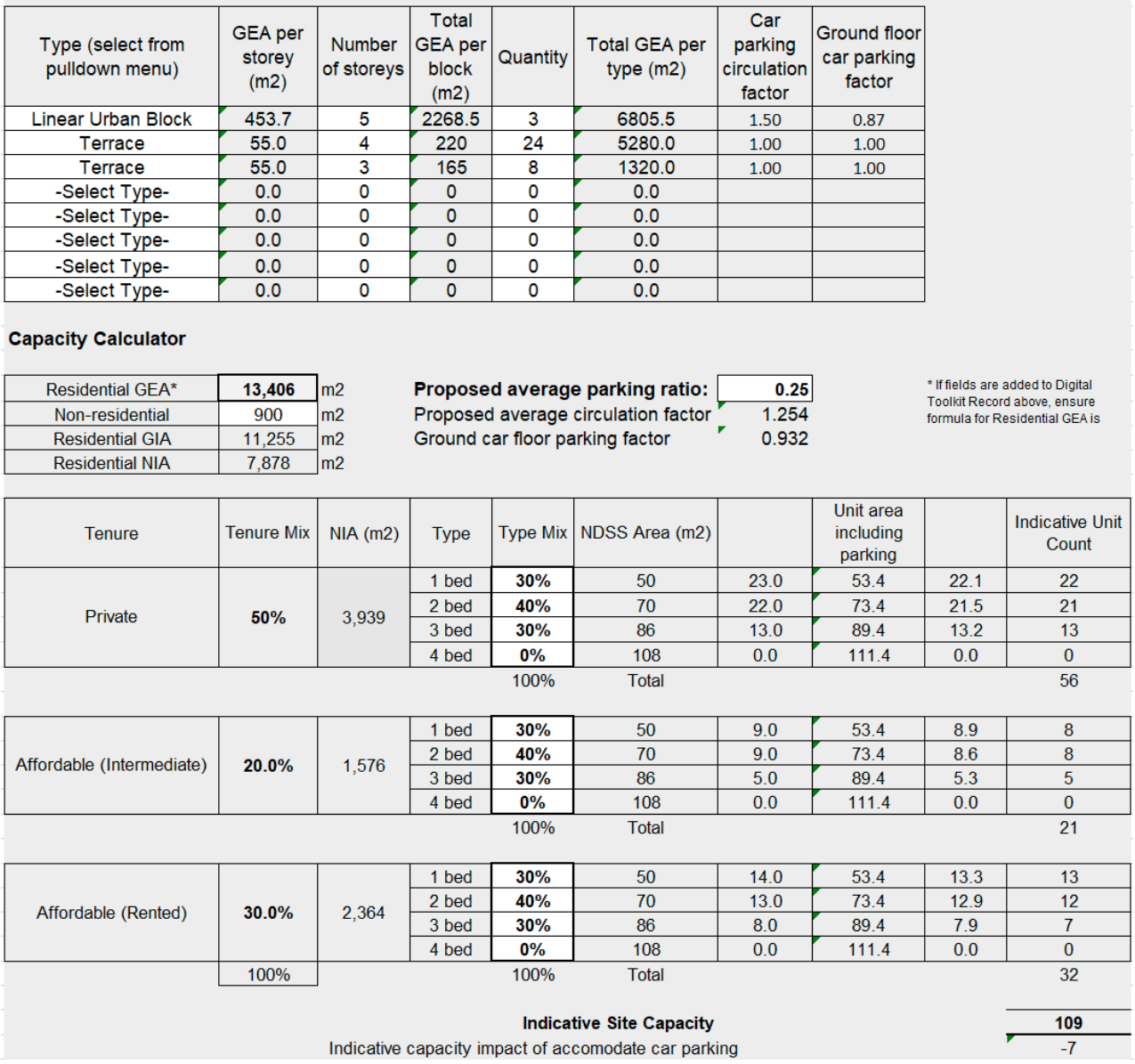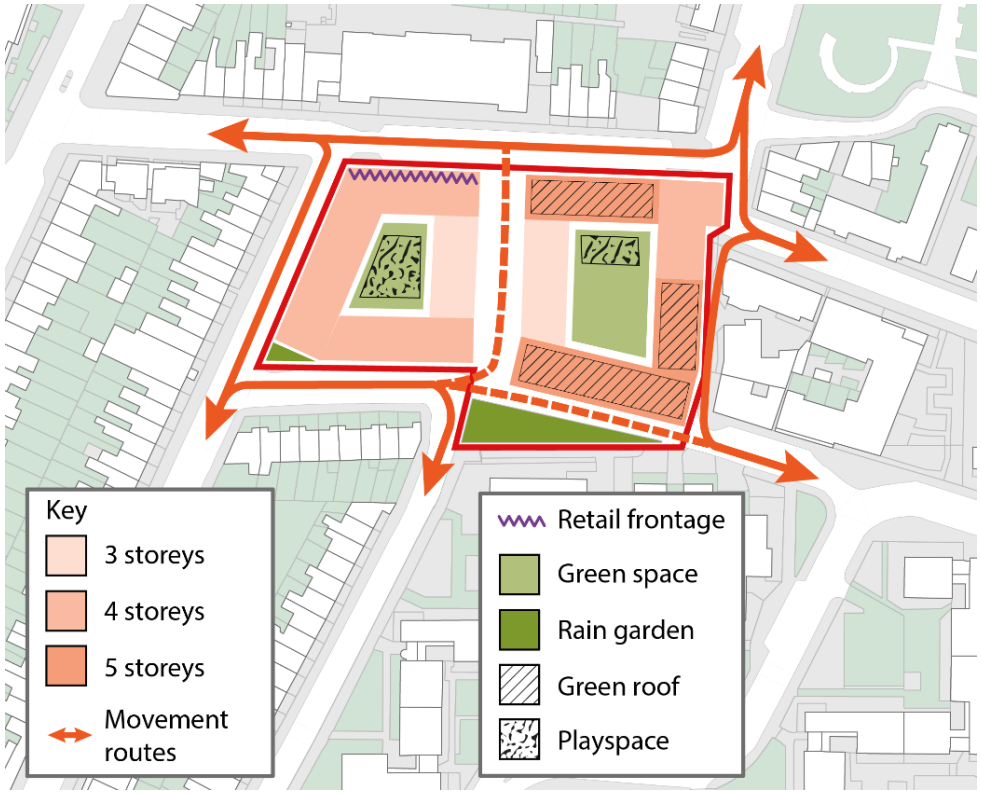The New Year has brought in a new wave of London Plan Guidance (LPG) published by the GLA which are currently out for consultation. The five current LPG are:
-
Large-scale Purpose-built Shared Living Guidance
-
Characterisation and Growth Strategy
-
Small Site Design Codes
-
Optimising Site Capacity: A Design-led Approach
-
Housing Design Standards
All of these documents are currently out for consultation until 27th March 2022 and this blog focuses on the final four which fall under the heading ‘Design and Characterisation Guidance’.
The four design and characterisation LPG were previously ‘modules’ of the Good Quality Homes for All Londoners Guidance which was first published for consultation between October 2020 and January 2021.
Since the original consultation, the documents have been revised to each become a separate LPG and are now the subject of a fresh consultation. The consultation period for each of these documents closes on 27th March 2022 and the GLA intend to adopt the guidance in Autumn / Winter 2022.
The documents form part of a growing list of London Plan guidance which have been published in the last 18 months. My related blog,
Guidance, Guidance and more Guidance, provides an overview of these documents as well as a list of what else is in the pipeline.
Contents
In combination, the LPG provide detailed guidance on design and urban characterisation for London residential schemes. There is a clear focus on residential quality and design both at the plan making and decision-making stage (particularly for applications that fall into the major development category) and the documents together provide a step-by-step approach to moving from the plan making level to detailed design.
A brief summary of each of the LPG’s is set out below.
Characterisation and Growth Strategy
This document is intended to assist local planning authorities (LPAs) and neighbourhood planning groups in undertaking characterisation assessments and formulating a growth strategy for their area in accordance with the requirement of London Plan Policy D1. Whilst it is targeted at LPAs it is an important document for developers and landowners to understand as the methodology contained with the document will be key to the development of Local Plans.
The characterisation and growth strategies will form a key part of the Local Plan evidence base, leading to potential site allocations, and will identify key areas for growth and, crucially, include the identification of tall building locations.
The LPG sets out a staged process for the preparation of these strategies. The first is focused around the collection of data relating to socio-economic, housing, environmental, urban form, land use, cultural and heritage considerations. The use of digital tools and data sources introduced by the GLA in recent years is encourage as well as the early engagement with local communities. The outcome and overlaying of this research stage will be a map of character types (also known as ‘area types’ within the National Model Design Code) and the following example is provided:
Figure 1: Example of Character Types (Source: GLA Characterisation and Growth Strategy LPG)
The second stage is the evaluation of the data to define boundaries and carrying out a quality and sensitivity assessment of each character area. This requires LPAs to split areas into one of three categories of change; conserve, enhance or transform and assess their capacity for growth. It is clear that this reflects the 2020 White Paper ‘Planning for the Future’ in terms of the categorisation of growth areas, in concept if not name. ‘Protected, renewal and growth has become ‘conserve, enhance and transform.’
Figure 2: Example of Areas of Change Map (Source: GLA Characterisation and Growth Strategy LPG)
The LPG also requires LPAs at this stage to define what constitutes a tall building and includes a tall building definition for the whole borough based on storey height and AOD. This is directly linked to the requirement of London Plan Policy D9 which requires authorities to identify areas suitable for tall buildings. The LPG goes into detail in providing guidance or how to undertake this assessment and goes further than that which would typically be the case within a Local Plan strategic policies map.
The LPG confirms that the Growth Strategy would typically form part of the consultation document for the Local Plan and form the basis for the production of the Small Site Design Code and Larger Site Capacity which are the subject to two other LPGs published for consultation.
Figure 3: Extract for Characterisation and Growth Strategy LPG showing the relationship between the LPG Subject to the Feb 2022 Consultation (Source: GLA Characterisation and Growth Strategy LPG)
Small Sites Design Code
This LPG is aimed at LPAs in the preparation of design codes for small sites in accordance with the National Design Guide and Policy H2 of the London Plan. A small site is defined as being no larger than 0.25 hectare.
The Design Code will follow on from the characterisation and growth strategy and will apply to the character types (‘area’ types) identified in that stage.
The LPG encourages the prioritisation of areas where small sites can come forward including the incremental intensification of existing residential areas with higher connectivity, due to proximity to transport infrastructure or town centres. Examples of intensification include back-land, corner infill plots and rooftop extensions.
The design codes themselves are encouraged to be primarily visual documents which illustrates the key design parameters in graphical form. The precise content will be dependent on the area and code but could include the following topics:
- Boundary conditions
- Building line
- Front to front and back to back distances
- Building height
- Green cover and landscaping
- Block and building form
- Roof form
- Materiality and detailing
The final design code will form part of the development plan and be subject to neighbour and stakeholder consultation.
Optimising Site Capacity: A Design-led Approach
The Optimising Site Capacity LPG follows on from the Characterisation and Growth Strategy guidance. It provides guidance on establishing the optimal design and capacity for large residential and mixed use sites following the identification of the character type.
Unlike the preceding two LPGs, this document has a broader target audience in specifically targeting not just plan making LPAs, but also applicants during the design stage of major projects. We are aware of this document being referenced by Planning Officers during pre-application meetings.
Stage one of the guidance focuses on the assessment of the existing site in its surrounding context and follows what many architect and planners would consider to be best practice. The analysis should include environmental, connectivity, permeability and access, built form, open space, heritage, building layout and infrastructure capacity.
Based on this assessment, the guidance encourages establishing a ‘vision’ for each site, referencing back to the character area including opportunities for tall buildings. Once the vision has been defined, parameters must be established for the site which when followed will lead to the generation of a detailed site allocation or initial scheme design. The figure below shows the recommended parameters.
Figure 4: List and sequence of parameters which should be defined for a site (Source: Optimising Site Capacity: A Design-led Approach)
These parameters will then provide the basis for establishing a site capacity which is intended to be produced using 3D software such as sketch-up. The 3D model will produce a massing informed by the parameters and constraints. This information can then be inserted into the ‘Site Capacity Toolkit’ which will provide a detailed breakdown of all aspects of the scheme including floorspace, storeys, unit mix and car parking. The images below show the 3D model and how this translates into the Site Capacity Toolkit.
Figure 5: Indicative Massing of a Large Site Informed by Parameters (Source: Optimising Site Capacity: A Design-led Approach)
Figure 6: Indicative Site Capacity Toolkit Output (Source: Optimising Site Capacity: A Design-led Approach)
Once the parameters and indicative site capacity has been determined for a site, the design parameters should be formalised. These design parameters will become a high-level strategic design code for the site and used either at the Local Plan or planning application stage. The LPG recommends that these formalised design parameters can be used within site allocations, neighbourhood plans, SPDs or opportunity area frameworks. At the application stage, the LPG encourages this work to be carried out during the pre-application stage and submitted as part of the planning application. The plan below shows the example of the design parameter output for these two purposes.
Figure 7: Example of the Formalised Design Parameters (Source: Optimising Site Capacity: A Design-led Approach)
Housing Design Standards LPG
The final LPG - and the most detailed - is the Housing Design Standards guidance. This is specifically focused at developers of residential schemes with the intention of providing additional guidance on how to achieve the policy requirements of the London Plan.
The LPG covers three areas: Placemaking and the public realm; Shared spaces and ancillary facilities; and Homes and private outside space and relates to all housing developments which fall within Use Class C3 but excludes co-living.
There is too much detail to summarise with this blog and much of the content will be familiar to those working in the residential market in London having been set out in previous GLA documents and guidance. However, what the LPG does do is consolidate the various pieces of guidance into one document and provide a checklist of issues to be worked through during the detailed design process.
Summary
These guidance documents continue the trend of the GLA publishing what are quite detailed guidance documents to supplement the (already substantive body of) London Plan policies. Unlike previous LPGs these documents are focused on design and provide a step by step approach to understanding development potential for the purpose of informing Local Plans as well as planning applications.
It appears, through this guidance, that the GLA is seeking to introduce a degree of consistency across all Boroughs and hence residential sites in London. This consistency will help LPAs in the development of their Local Plans (assuming they align themselves with the guidance) but also stakeholders and the public in understanding the plan making process. There is a clear focus on embracing technology and making the output graphical and visual.
The LPGs all reference the National Model Design Code and build upon the instructions contained within that document. In addition, it is clear that they have also been informed by the 2020 Planning White Paper in terms of the identification of three ‘area types.’ How this will need to change or not once we finally see the response to the 2020 consultation document this year will need to be seen.
To some extent, many LPAs will already be undertaking the best practice contained within this guidance but for those that are behind in their plan making, the documents are likely to be helpful in ensuring their plans are consistent with London Plan policy. But with many LPAs are under severe resource pressure so it is not clear how existing policy teams will deal with these additional requirements.
For those involved in the promotion of land or the development of schemes for subsequent planning applications there are some things to note. Firstly, there is considerable emphasis placed on the process for establishing appropriate locations for tall buildings in accordance with London Plan Policy D9. Early engagement in this process will be key for those seeking to bring forward tall buildings on specific sites. Secondly, subject to the outcome of the consultation, it is likely that LPAs will use the guidance and particularly the Site Capacity Toolkit when assessing schemes for development. Undertaking this assessment, understanding the implications and associated challenges will be key to optimising development capacity. And finally, utilising the approach in the guidance will assist in the promotion of sites in the Local Plan process.
There is a lot to consider here and remember, it won’t be long until the next guidance document is published!
Header image credit: Greater London Authority



